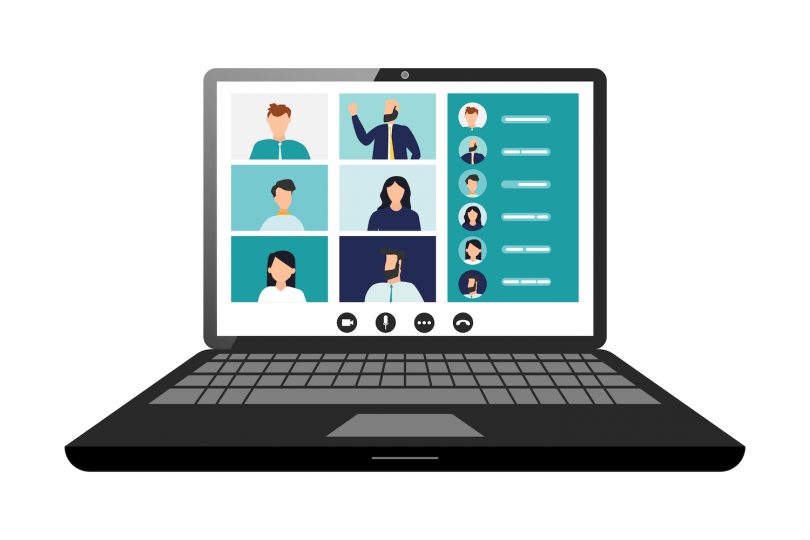As the pandemic summer of 2020 winds down, it is abundantly clear that working from home and video meetings will continue to be the norm, even as some companies have begun to partially return to physical workplaces. What are some of the best practices of video conferencing that have emerged over the last six months of remote work? And what etiquette should communicators consistently model to strengthen virtual relationships with peers, clients, media and stakeholders?
1. Turn on your video.
It can be rude to not turn on your video. Virtual vulnerability can lead to empathy and trust. Besides, our brains process 90 percent of visual information but only 10 percent of auditory. That means, if you show up, people will pay more attention and remember you more. Nonverbal communication such as facial expressions and body language speak volumes, too. Even if you are muted, your box should show you at your best — your smiles, nods and posture reflecting your interest and engagement.
2. Know your equipment and software.
Whether you are using a top-of-the line Logitech BRIO, the integrated webcam on your laptop or an iPhone, you need to know how to get the best audio and video quality from your hardware. Whether you use Zoom, Microsoft Teams, GoToMeeting or Google Meet, learn to use the software. Avoid common gaffes such as muted mics and the share-screen stumble by practicing transitions and short-cut keys before a presentation.
3. Get camera-ready.
Do you have a video-conference wardrobe? We preach the commandments of media readiness to clients preparing for TV interviews but often do not dress for the camera ourselves. Choose solid colors and avoid busy patterns. By adopting a workplace appearance in front of the webcam, you will give your professional attitude a boost as well.
4. Let them see your eyes.
Eye contact is one of the great benefits of video calls — you can stare at someone without reservation from your Brady Bunch tile. Ensure that your face is lit evenly from the front so they can see your eyes. Bright light behind you from a lamp or window will make you look like a shadow creature (aka dark blob). Place the webcam lens at eye level, even if it means elevating your laptop on books or boxes. Look at the lens when speaking to make virtual eye contact with conference participants.
5. Curate a view that complements your message.
Drop the gimmicky virtual background in favor of a set that speaks to who you are and what you do. Due to overuse or misuse, virtual backgrounds are falling behind “living sets” as the preferred studio. Props such as books and posters create visual cues when placed strategically in the view. If you must use a digital backdrop for privacy or branding, then make sure your webcam and computer processor can handle it — or you may need a physical green screen — otherwise you may appear like a hologram.
Rosemary Ravinal, APR, founder/chief trainer at Miami-based RMR Communications Consulting, helps business leaders master the art of public speaking, inspiring presentations and authoritative media interviews. She created Virtual Speaker Toolbox and ZoomScore™ to help business leaders boost their confidence and impact on virtual platforms during the coronavirus pandemic. Ravinal previously served as a communications leader and spokesperson for global brands such as Univision, Ericsson and AT&T.
Illustration credit: vitechek








The pandemic and working from home have certainly required a new definition for professionalism and etiquette. I agree that it is unlikely we will see usage of video conferencing decrease despite some workplaces returning to the office, and I enjoyed reading these insightful tips on upholding professionalism in this new setting. -Kathleen McManus, writer/editor for Platform Magazine